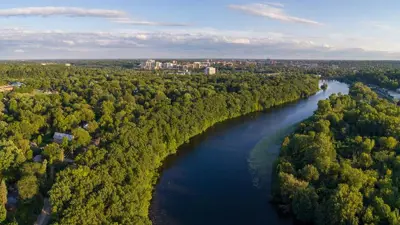Project Overview
Utility improvements are being made to increase the city's sewer system capacity. Trenchless installation methods will be used throughout construction to reduce surface impacts and to expedite the project's completion schedule.
Project Limits
The project will take place in the areas of First Street from West Washington Street to Miller Avenue and along West Washington Street from Third Street to First Street. This route was selected due to environmental factors, right-of-way access and scheduling needs.
Project Manager
Tracy Anderson, P.E.
TAnderson@a2gov.org
734.794.6410 x43639
Timeline
| Planning and Design | Construction |
| January 2024 – July 2025 | December 2025 – August 2026 |
Why is this project begin done?
To support future development and population growth, the City of Ann Arbor and the University of Michigan are partnering to expand the city's sewer system capacity.
The project aligns with the City of Ann Arbor's Master Plan, which outlines the need for future capacity enhancements, but also accommodates the University of Michigan's plans to develop a new Central Campus residential complex that will be built and occupied by Fall 2026.
Potential construction impacts
- Noise and dust from construction work
- Road and sidewalk closures
- Parking restrictions

Trenchless installation
Microtunneling, a form of trenchless installation, is a method of installing pipes underground without large, open trenches across property or roads. Instead, a limited number of access points are provided at shafts located along the path of the pipe to ensure proper installation. A microtunnel boring machine is launched from a jacking shaft to a reception shaft to install the pipe underground from shaft to shaft, thereby avoiding open trenches.
Benefits of using a trenchless installation method include:
- minimized disruption to the surface along the pipe alignment
- reduced disruption to traffic at intersections as the pipe is tunneled underneath the intersection
- faster installation time
- reduces the amount of handling of contaminated ground or soil
- increased accuracy of installation
This project will be the first time the City of Ann Arbor will be using a microtunneling for sewer pipe installation.
Funding source
The University of Michigan is partnering with the City by providing funding for this project.

